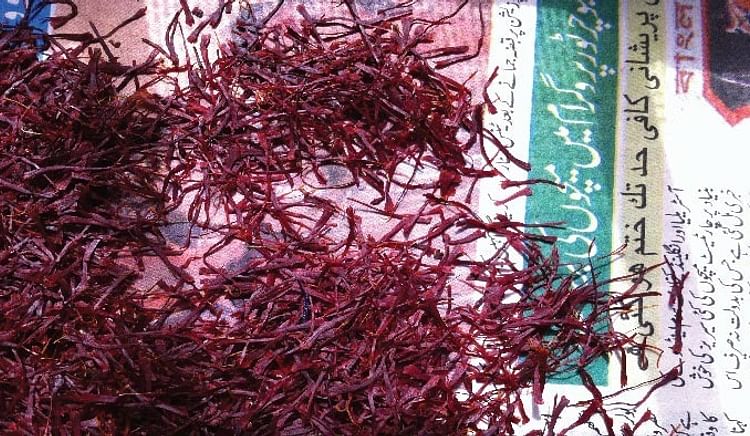Saffron – Threads of Gold
The insiders' view of the world's most expensive spice
11 May, 2015 by Phantom
With the prices of saffron in six figures, it is the most expensive spice by a mile. It becomes imperative to know the product well before buying it.
What is saffron?
It is the stigmas of the flower called crocus sativus. Each flower has three stigmas and six stamens, attached to the flower by means of a very fine filament called the style. The stigmas are crimson in colour; the stamens golden yellow and the styles white. Only the stigmas can be called saffron. The white styles are sometimes included in the finished product, in a not very superior grade of saffron, where they show up as pale yellow strands amidst the crimson saffron.
Where does it come from?
Over 90% of the world’s saffron crop grows in Iran, around the holy city of Mashad, particularly in a district called Torbat-e Heydarieh. Around 8% grows in Pampore, Kashmir. The rest grows in minuscule quantities in Greece, Central Italy near the Abruzzo range and La Mancha in Spain. Or even in Switzerland or New Zealand.
How can you use it in the kitchen?
All over the world, saffron is used for its golden colour and its unmistakable fragrance. Milk or chhena (like mithai), rice (like biryani, Iranian polo, paella and risotto) or alternatively fish preparations all use saffron. You have to soak a few threads – say two per person – in a few teaspoons of warm milk for 15 minutes, and sprinkle that over the food in the last stage of cooking.
How can you tell good saffron from bad or fake?
There’s just one simple answer: you can’t. Appropriately dyed and shredded crepe paper looks frighteningly similar to real saffron. So where you buy yours from is vital. Don’t be tempted to get yours from the brother of a friend’s father in law who simply hands you a box and expects to be paid for it. Genuine saffron is much more likely to be sold in a packet with a company name, address and telephone number on it.
Written By
Appearing incognito is The Phantom's style, so we are keeping this identity under wraps. What we can tell you is that this is one food critic that has earned the respect of restaurateurs and foodies alike. With an astute palate and an adventurous spirit, the Phantom Critic has more than 20 years of experience writing about food and reviewing restaurants

